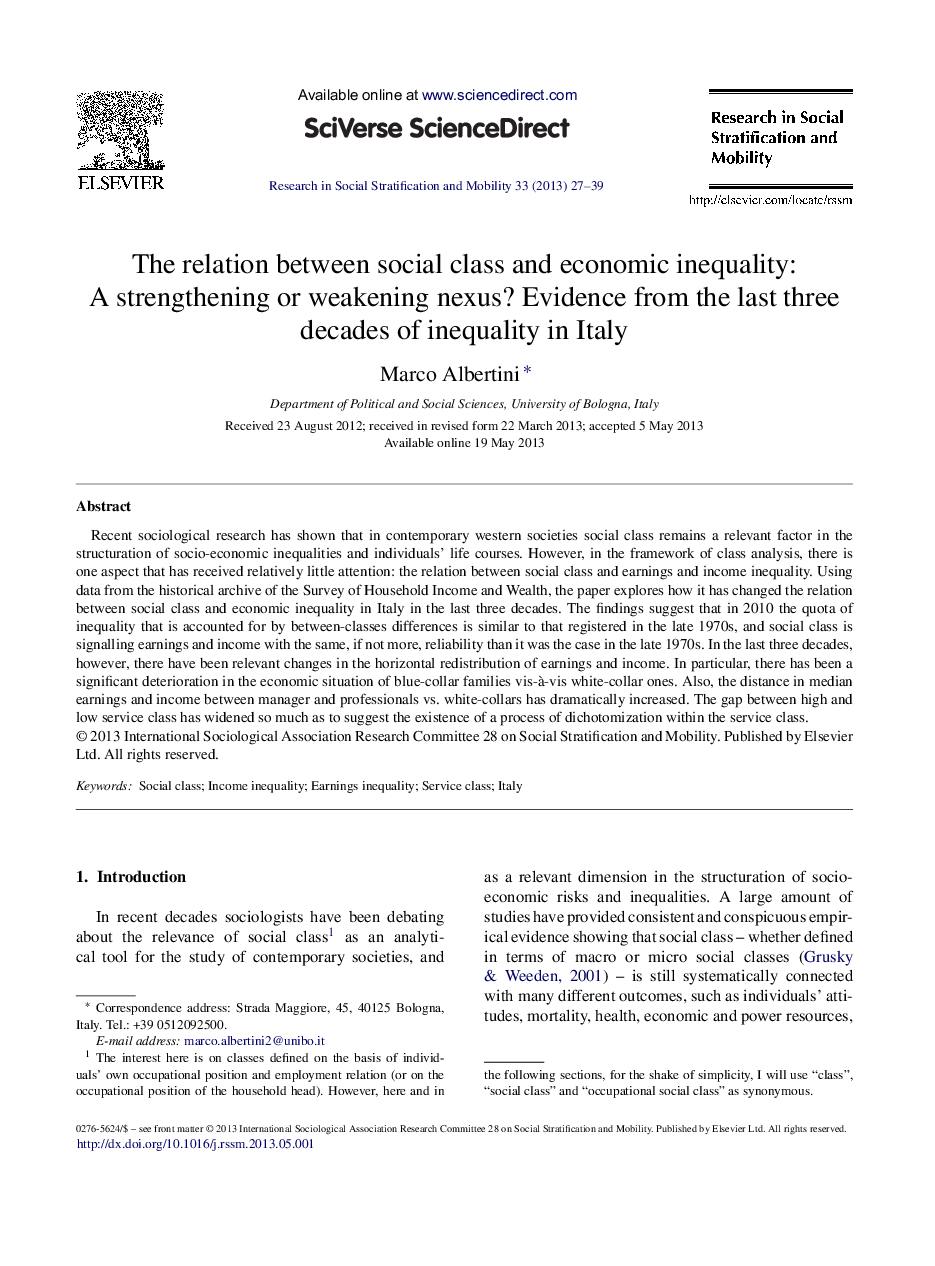| Article ID | Journal | Published Year | Pages | File Type |
|---|---|---|---|---|
| 998645 | Research in Social Stratification and Mobility | 2013 | 13 Pages |
Recent sociological research has shown that in contemporary western societies social class remains a relevant factor in the structuration of socio-economic inequalities and individuals’ life courses. However, in the framework of class analysis, there is one aspect that has received relatively little attention: the relation between social class and earnings and income inequality. Using data from the historical archive of the Survey of Household Income and Wealth, the paper explores how it has changed the relation between social class and economic inequality in Italy in the last three decades. The findings suggest that in 2010 the quota of inequality that is accounted for by between-classes differences is similar to that registered in the late 1970s, and social class is signalling earnings and income with the same, if not more, reliability than it was the case in the late 1970s. In the last three decades, however, there have been relevant changes in the horizontal redistribution of earnings and income. In particular, there has been a significant deterioration in the economic situation of blue-collar families vis-à-vis white-collar ones. Also, the distance in median earnings and income between manager and professionals vs. white-collars has dramatically increased. The gap between high and low service class has widened so much as to suggest the existence of a process of dichotomization within the service class.
